
Behavioral Interventions


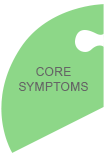
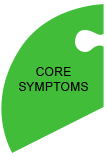
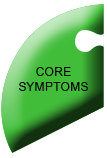
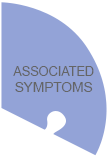
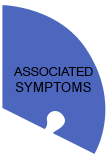
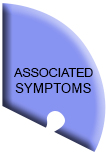



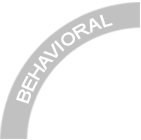
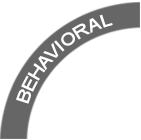
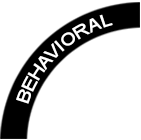









Behavioral therapy is a treatment approach that relies on the monitoring of observable progress in response to systematic behavioral instructions. In behavioral therapy, all aspects of the child’s functioning, including developmental skills, social deficits, and problem behaviors, are thought to result from a child’s interaction with his or her surroundings.1
Behavioral therapy aims to utilize this theory by providing an environment that is conducive for developmental progress. Depending on a child’s age, particular deficits, or specific behavior problems, the approach and goal of behavior therapy varies greatly among individuals with autism.
Please find several examples of behavioral-based therapies below:
 Applied Behavior Analysis (ABA) uses the principles of behavioral therapy to elicit positive changes in an individual’s behavior. It is among the most supported therapies for the core symptoms of autism.
Applied Behavior Analysis (ABA) uses the principles of behavioral therapy to elicit positive changes in an individual’s behavior. It is among the most supported therapies for the core symptoms of autism. Research has shown that earlier interventions for ASD, such as the Early Start Denver Model (ESDM), are associated with better outcomes, including improved IQ, language, and adaptive behaviors like recognizing faces.
Research has shown that earlier interventions for ASD, such as the Early Start Denver Model (ESDM), are associated with better outcomes, including improved IQ, language, and adaptive behaviors like recognizing faces.
In one study, researchers show that ESDM leads to a better response to stimuli by the brain’s prefrontal cortex. In the study, scientists used electroencephalography (EEG)—a test that measures electrical activity along the scalp—on children between 18 and 30 months of age. After two years, the cortical activity of children with autism who participated in ESDM approximated that of children without ASD when they were shown images of faces.3 The findings demonstrate that the brains of children with ASD can process social stimuli in a typical manner when the disorder is addressed early in life using ESDM. Thus, the severity of ASD can possibly be allayed by way of early intervention.
 Based on the Early Start Denver Model, Infant Start is another promising early intervention. Infant Start is a parent-led behavioral intervention that emphasizes parent-child social interactions from infancy. In a study at University of California, Davis, MIND Institute, symptomatic infants between seven and 15 months of age, and their parents, participated in a 12-week, low-intensity pilot program. During weekly sessions, highly trained therapists coached parents in individualized behavioral therapies, which parents continued in the home environment. By 18 months, the children who participated in Infant Start had significantly fewer autism symptoms than the children of families who chose not to enroll in the pilot study.4
Based on the Early Start Denver Model, Infant Start is another promising early intervention. Infant Start is a parent-led behavioral intervention that emphasizes parent-child social interactions from infancy. In a study at University of California, Davis, MIND Institute, symptomatic infants between seven and 15 months of age, and their parents, participated in a 12-week, low-intensity pilot program. During weekly sessions, highly trained therapists coached parents in individualized behavioral therapies, which parents continued in the home environment. By 18 months, the children who participated in Infant Start had significantly fewer autism symptoms than the children of families who chose not to enroll in the pilot study.4
 Cognitive behavioral therapy addresses how thinking is processed. It has a long history of use in the mental health community, originally designed as psychotherapy to treat depression.
Cognitive behavioral therapy addresses how thinking is processed. It has a long history of use in the mental health community, originally designed as psychotherapy to treat depression.
Cognitive behavioral therapy has now been adapted to treat autism symptoms as well. For example, a group of scientists at the University of Colorado developed a program, called Facing Your Fears (FYF), which uses cognitive behavior therapies to help children (8–14 years of age) with ASD manage anxiety. In cognitive behavioral therapy, trained therapists help individuals recognize certain feelings and teach them how to manage those emotions.
The Colorado scientists adapted the FYF program to help young adults (13–18 years of age) with ASD manage anxiety during the difficult teen years. The modifications in the study included a focus on social skills, parental involvement, and use of technology to help the participants develop coping strategies to lower anxiety. The participants in the program reported decreased feelings of social anxiety, separation anxiety, and generalized anxiety at the end of the program and at the three-month follow-up.5 This study is one of the few cognitive behavioral therapies that target teens with ASD. A subsequent study also found that an adapted form of cognitive behavioral therapy successfully decreased symptoms of anxiety in children between the ages of seven and 11.6
 While effective, behavior therapy can be expensive. Autism insurance coverage varies greatly, and given the high cost of some autism therapies, middle and low-income families have limited treatment options. Researchers are working to find cost-effective autism therapy. The Playwisely program is an emerging, low-cost system designed to promote connections between sensory areas of the brain. The program uses interactive flashcards that mix sight, sound, and touch.
While effective, behavior therapy can be expensive. Autism insurance coverage varies greatly, and given the high cost of some autism therapies, middle and low-income families have limited treatment options. Researchers are working to find cost-effective autism therapy. The Playwisely program is an emerging, low-cost system designed to promote connections between sensory areas of the brain. The program uses interactive flashcards that mix sight, sound, and touch.
Researchers from the Autism Treatment Center in Dallas, Texas, have found that Playwisely improves multiple skills in ASD after three months during a preliminary study. They reported significant improvements in recognition, sensory mixing, speech sound awareness, letter recognition, and early memory skills. The authors of the study estimate that Playwisely is one-tenth the cost of available alternatives.7
| Evidence Legend | |
|---|---|
 |
Research-supported – a therapy with the highest level of evidence for safety and effectiveness based on rigorous scientific research and well-controlled clinical trials. |
 |
Promising – a therapy that is being actively researched in scientific studies and clinical trials with promising results |
 |
Suggestive – a therapy that has been known for some time but is not actively researched at present OR a novel therapy having current research of one or two preliminary studies showing suggestive results |
 |
No evidence available – a therapy that lacks any evidence-based support for effectiveness or safety |
| References: |
7. Kern JK, et al. (2013). “Prospective, blinded exploratory evaluation of the PlayWisely program in children with autism spectrum disorder. Yale J Biol Med, 86(2): 157-67. [PMID 23766737] |

